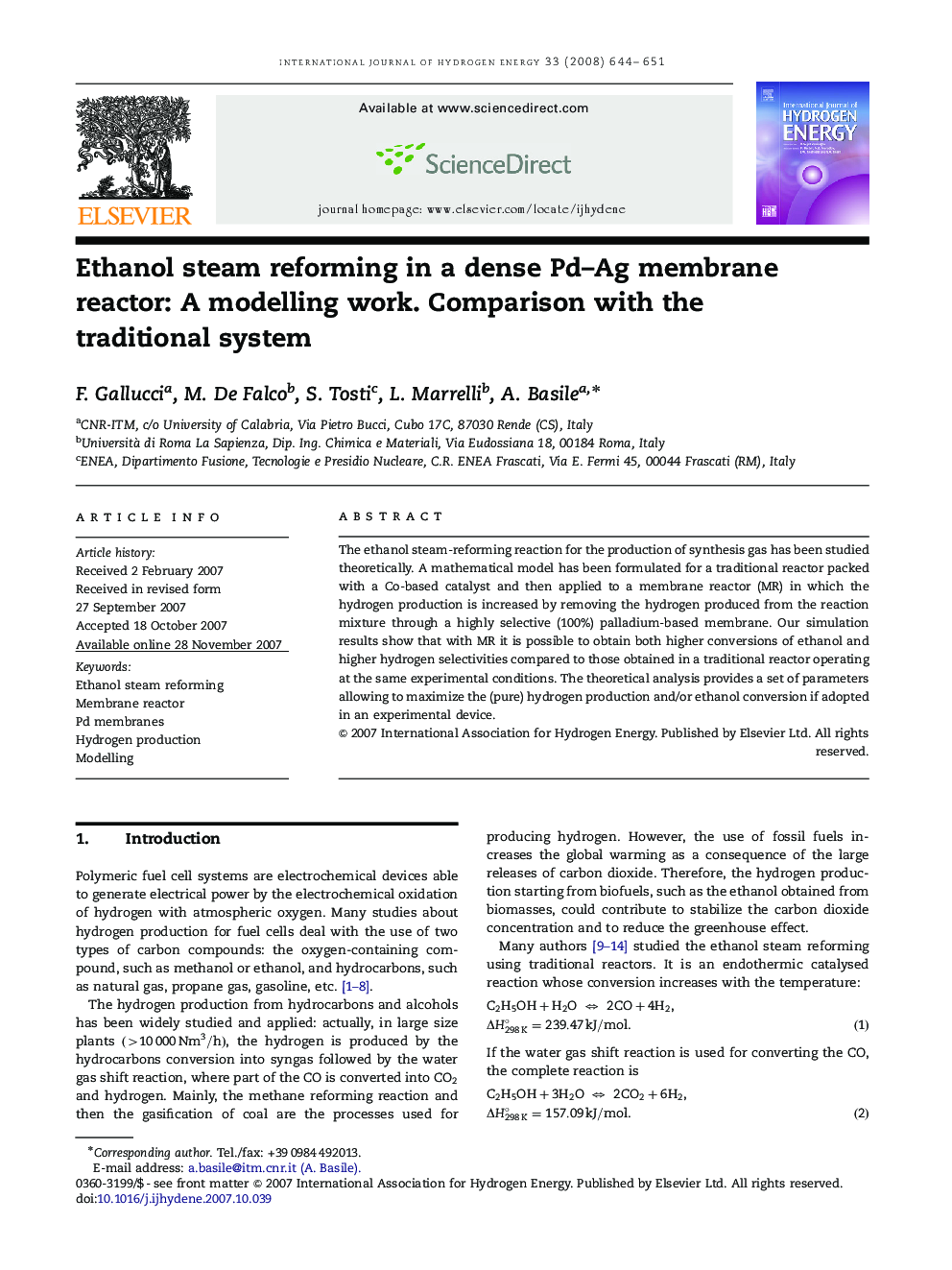| Article ID | Journal | Published Year | Pages | File Type |
|---|---|---|---|---|
| 1279991 | International Journal of Hydrogen Energy | 2008 | 8 Pages |
The ethanol steam-reforming reaction for the production of synthesis gas has been studied theoretically. A mathematical model has been formulated for a traditional reactor packed with a Co-based catalyst and then applied to a membrane reactor (MR) in which the hydrogen production is increased by removing the hydrogen produced from the reaction mixture through a highly selective (100%) palladium-based membrane. Our simulation results show that with MR it is possible to obtain both higher conversions of ethanol and higher hydrogen selectivities compared to those obtained in a traditional reactor operating at the same experimental conditions. The theoretical analysis provides a set of parameters allowing to maximize the (pure) hydrogen production and/or ethanol conversion if adopted in an experimental device.
